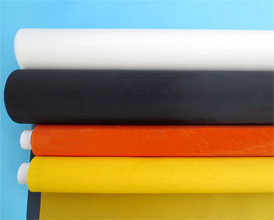Introduction to common screen printing
Sep. 18, 2019
Screen printing, also known as orifice printing, is formed by the opening of the screen, which is the basis of screen printing.
The performance of the screen affects the quality of screen printing, such as the material of the screen, the number of meshes, the degree of opening, and the aperture ratio, which have a great influence on the ink transfer of the screen printing.
Screen printing commonly used are: silk screen, NMO nylon mesh, polyester mesh, stainless steel wire mesh and so on.
Silk screen is also called silk net, silk wire mesh, woven from natural silk, the earliest screen printing material.
Advantages: strong water resistance, certain hygroscopicity, simple operation of the stretch net, and good bonding with the photosensitive adhesive.
Disadvantages: poor wear resistance and chemical resistance, easy to age and brittle, stretch net is small tension, printing resistance is not strong, high cost. It is currently used in small amounts and has been replaced by synthetic fibers.
NMO nylon mesh, also known as nylon mesh, is a monofilament fabric that is heat-treated and dimensionally stable after weaving. Plain weave up to 380 mesh, twill weave up to 330 mesh
Features: Smooth surface, good ink permeability, fine print with large particles of high viscosity. Fine mesh screens with fine mesh weave are suitable for fine pattern printing. Tensile strength, nodular fastness, good elastic wear resistance and long life. It is resistant to acids and chemicals, resistant to organic solvents, easy to regenerate, and especially resistant to alkali.
Attention to use: Compared with silk, polyester mesh has a higher elongation ratio. When stretching the net, pay attention to increase the strength of the pulling net, and at the same time, the shrinking force will also become larger. Therefore, it is necessary to use a strong frame and a puller. Low heat resistance. Not resistant to strong acid, formic acid erosion, UV has a slight effect on it, pay attention to protect from light.
Polyester mesh can be used as a polyester bolting cloth. Its characteristics: small tensile strength and strong elasticity. Single-wire mesh is suitable for printing integrated circuits, rear-mode semiconductors, and can be supervised. Tensile strength, structural strength, resilience, and printing durability are all good. It has sufficient chemical resistance, especially acid resistance and organic solvent resistant walls, and can be regenerated like nylon mesh. It has low hygroscopicity, is almost unaffected by moisture, and has higher heat resistance than nylon and is less affected by ultraviolet light.
“Mesh” is the unit of specification for the screen, which refers to the number of holes in the length of 1 inch (25.4 mm). And mm is a simple unit of length.
Since the screen has the corresponding technical standards, the screens of different sizes have the diameter of the specified filaments, so the screens of different meshes are simply stated, and each hole does not count the actual wire diameter of the wire.
Mesh is divided into two kinds of textile methods, PW stands for plain weave TW stands for twill weave and is divided into white and yellow: W = white Y = yellow.
The polyester mesh is a special net for printing. The tension of the polyester screen printing meshis balanced, and the mesh has a clear printing effect. Polyester screen printing mesh has the characteristics of uniform mesh, small elasticity and strong solvent resistance, and is suitable for screen printing with high printing precision.
Our company is a polyester screen printing wholesaler. Our fabrics are all woven with food grade yarns. The quality of our products is safe and reliable, and we are trusted by users. If you have any needs, please feel free to contact us.








